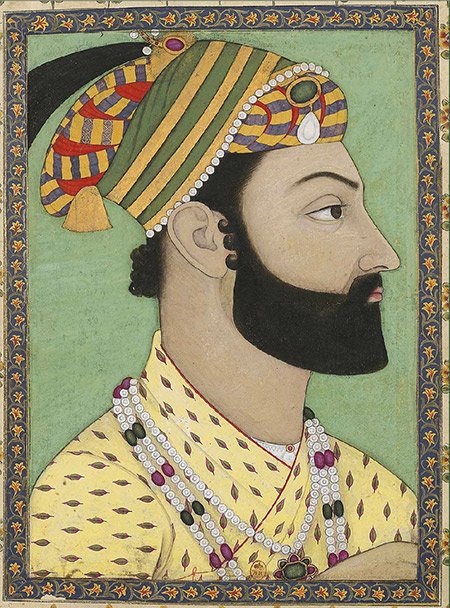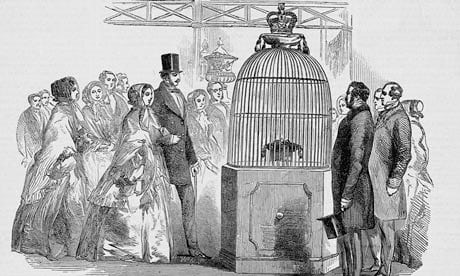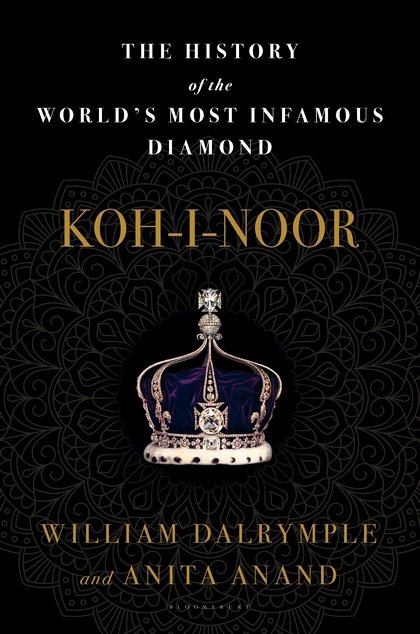Today, the Koh-i-Noor diamond is part of the crown jewels of England. Hundreds of visitors to the Tower of London see it everyday. This bit of shiny rock has an ancient, bloody past that begins long before British colonialism in India.
William Dalrymple tackles the unraveling of the diamond’s history as it changed hands among the ruling kings and maharajahs in past centuries. He tries to extract historical fact from local legend in the lead up to the East India Company’s domination of the region.
The Koh-i-Noor and its sister, the Timur Ruby, were both kept by Ahmad Khan Abdali on his person. He wore both of them in an armlet in Kandahar when he took the throne to create what became in time a new country, and the home of the Koh-i-Noor for the next seventy years — Afghanistan.
Ahmad Khan knew he would be followed by his Persian enemies when he fled the violence and chaos of Nader Shah’s camp with the Koh-i-Noor. He therefore took precautions, throwing off his 10,000 pursuers by sending a small diversionary force towards Herat, while he headed on to Kandahar, along with the bulk of his troops. The Persians fell for the ruse, and Ahmad Khan reached the safety of his tribal heartlands without having to fight, and with the Koh-i-Noor strapped to his arm. ~Pg. 92-3.

Anita Anand takes over the second half of the book, focusing on the diamond once it is signed over to Queen Victoria. She traces its time in the Great Exhibition of 1851, its recutting for the imperial crown and the life of Duleep Singh, the Sikh maharajah who forfeited his right to the stone when he was a boy (Anand also wrote a wonderful biography of Sophia Duleep Singh, his daughter. She was goddaughter to Queen Victoria).
In 1852, while the Koh-i-Noor was being transformed on the scaife, Duleep Singh was undergoing a similar process in India. He had by now been in the care of the Logins for three years, and as a boy of thirteen had come to regard them as his parents. John Login’s opinion mattered to Duleep above all else, and he tried to pleased his guardian by studying diligently, maintaining a cheery demeanour and joining in parlour games. Over time, Duleep developed genuine fondness for the couple, referring to John as his ‘MaBaap’ — a peculiarly Indian concept of ‘universal and complete parent.’ ~Pg. 238

There are dozens of smaller stories within the saga of the Koh-i-Noor, and like accent jewels in a crown, serve to better show off the main attraction. It was these that truly make the book an enjoyable read. The episode of the Duke of Wellington, well into his eighties and in no way a jeweler or a gemologist, being invited to make the first cut of the priceless stone. The English couple who adopted Singh and raised him as a British subject. A scene where Queen Victoria invites a young Duleep Singh to hold his forsaken diamond one more time.
There are also sidenotes on the legend of the Koh-i-Noor, that I would have enjoyed a bit more expansion. The diamond’s past truly did engage the British public’s collective imagination. Wilkie Collins wrote The Moonstone, a novel in which a young English woman inherits a large diamond with a murky past. What this book glosses over is the striking similarity to the Moonstone’s provenance, namely the Battle of Seringapatam.
The book also only briefly mentions the legend of a curse attached to the stone. I can only assume these were deliberate omissions meant to underline the true history, rather than the folklore that has grown up around it.
In balance, the book is a great read and an excellent introduction to the story of the Koh-i-Noor.
Further reading suggested by the Gemological Institute of America.
My thanks to Bloomsbury for the review copy.
Hardcover: 352 pages
Publisher: Bloomsbury (September 12, 2017)
Language: English
ISBN-13: 9781635570762
[star]

